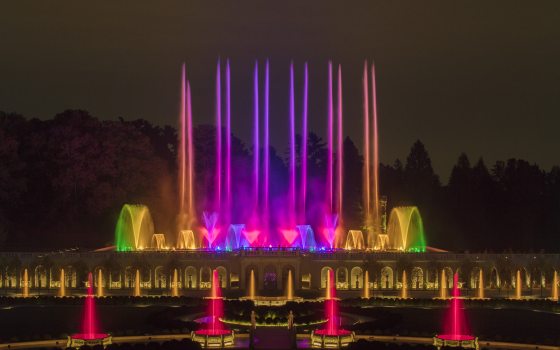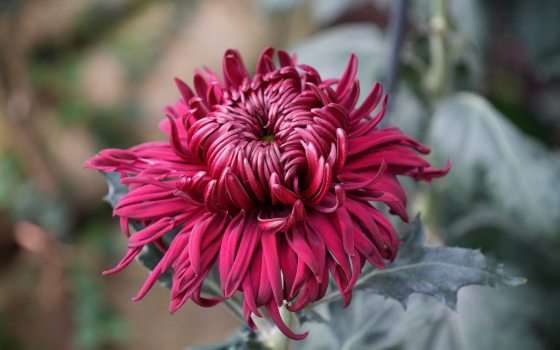From founder Pierre S. du Pont’s enthrallment with fountains from the time he was a child, to our iconic Illuminated Fountain Performances that captivate during each Festival of Fountains season, Longwood has long been fascinated with water as an entertainment element—and we have designed with water in ways that many have only dreamt of. Central to the story of making our fountains dance is Longwood’s P.S. du Pont Fellow and very first fountain choreographer Colvin Randall, who has been designing fountain performances for an incredible 45 years. In fact, it was Randall who developed the concept of adding music to our Main Fountain Garden performances in 1980 and initiated our Fireworks & Fountains Shows. Each and every year, Randall astounds us with his remarkably expressive performances with great swells of emotion, dramatic effects, and breathtakingly beautiful colors—and this season’s performances are no exception. Here, get a behind-the-scenes glimpse at the great care with which he designs his performances, and how to join us for these masterful evenings (with one running this Sunday!) … as we celebrate Randall’s boundless creativity and immeasurable impact on our Gardens.
Like du Pont, Randall has been fascinated by water since he himself was a child. The first fountains he remembers were those at Wanamaker’s in Philadelphia during their late 1950s Christmas display, synchronized to traditional holiday music. When in the seventh grade in Dover, Delaware, he first happened upon a Longwood Gardens brochure when his class was choosing a field trip location. He immediately became intrigued by the mention of Longwood’s fountains with colored lights. While Longwood was not selected for that field trip, Randall first visited with family on his 13th birthday, upon which he was “thrilled to gaze into the Rectangular Basin and see hundreds of lights, dozens of jets, and pipes everywhere.” He soon started coming to the illuminated evening shows annually, “which was just about my favorite thing in the world”—and the Longwood booklet Fountains of Longwood Gardens from 1960 one of his most treasured possessions.
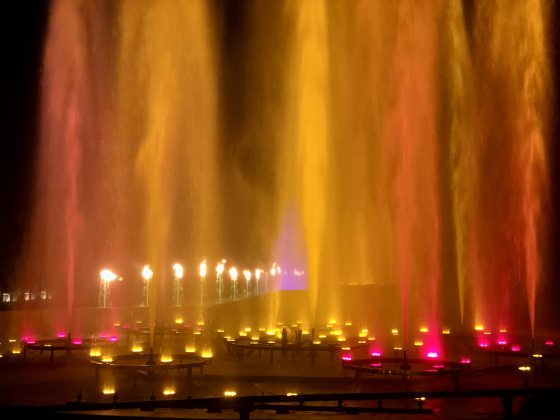
A close look at the jets and flame effects during Sleeping Beauty, designed by Colvin Randall. Photo by Scott Hummel.
Inspired by the fountains at Longwood, Randall began to plan his own display on his bedroom bureau, using glass eyedroppers for nozzles and an aquarium air hose for pipes. Further inspired by his trips to see the fountain displays at the 1964 New York World’s Fair for his 14th birthday, and again in 1965, Randall even fashioned his own three outdoor fountain systems in the backyard. Made possible by a plastic tabletop fountain, outdoor spigot, and thin brass tubing—and then the addition of colored cellophane over a flashlight lens, wrapped in a plastic bag and propped under the jet—his efforts resulted in “the best colored fountain show in Dover.”
After graduating from the University of Virginia with a degree in architectural history in 1972, Randall entered the Longwood Graduate Program at the University of Delaware in 1973. He became interested in the history of Longwood while researching the story of the Gardens’ fountains and completed his thesis, The History of The Fountains at Longwood Gardens, in 1977—graduating that same year with a master’s in ornamental horticulture. In 1977, Randall began his career at Longwood as public relations manager and held that position for 27 years; from 2004 to 2008, he served as Longwood’s first historian and information manager, and in 2008 was named the P.S. du Pont Fellow in recognition of his many contributions to the Gardens.

Designed by Colvin Randall, the July 2010 Founder’s Favorites Fireworks & Fountains Show featured music favored by Longwood founder Pierre S. du Pont, including American Fantasie by Victor Herbert and Sousa’s The Stars and Stripes Forever. Photo by Larry Albee.
Throughout Randall’s many years and many contributions to Longwood, his fascination with water has remained a constant … much to millions of our guests’ delight. Randall is the only Longwood fountain choreographer who has designed performances using three of our four programming systems—the first system, before Randall’s time, was our 1931 system that controlled the Main Fountain Garden’s then-724 lights. Randall first designed using cue sheets keyed to the 1966 control console, with an electrician calling out the mechanical counter numbers from a tape recorder playing the show music, and a second electrician changing the jet and color combinations following the cue sheets. He has designed using the 1984 computerized controls, by way of hundreds of hand-typed commands assembled by the computer into a complete show, synchronized to music using a time code.
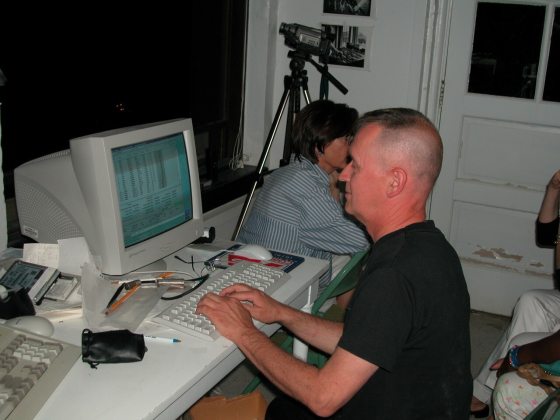
Colvin Randall starts a fountain performance in the Main Fountain Garden control room in 2005, using the second of the three systems on which he’s designed. Photo by Nathan Hayward.
Since 2017, he has designed using our cutting-edge Syncronorm computer program, instituted with our Main Fountain Garden revitalization and featuring almost three-dimensional visualization that allows a designer to view the show in real time as it’s created.

P.S. du Pont Fellow and fountain choreographer Colvin Randall, designing a fountain performance in his office in 2025. Photo by Daniel Traub.
Throughout the years, Randall has designed more than 40 Main Fountain Garden and 15 Open Air Theatre performances, describing them as “an Impressionist picture come to life.” His genre of choice? Classical. “I really enjoy classical performances because classical music has great swells of emotion. It has tension and release.” When designing a performance, the first thing Randall focuses on is the music itself. “I always try to choose music that by itself is interesting. It should be a beautiful listening experience, even without the fountains.”
He continues: “When designing Sleeping Beauty, for example, I collected at least 15 different performance versions. Then I would pick and choose to get the most interesting sonic experience … it’s amazing how different the performances are from one another. From the tempo that the conductor chooses for the piece, to the brass being more prominent in some versions, to a gong being more pronounced in others, I look for things that make it an exciting musical experience even before I get to the fountains.”
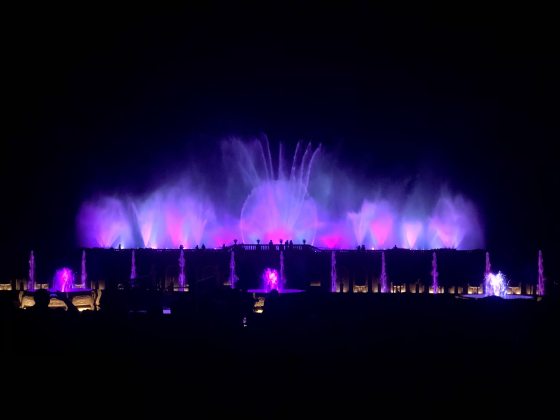
With Sleeping Beauty, Tchaikovsky’s masterpiece makes for a beautiful performance. Photo by Scott Hummel.
Once Randall gets the soundtrack where he wants it, he then focuses on the fountains. “The way I design is by focusing on the form of the water throughout the entire show first, then the color. I start with an empty canvas, first figuring out where to launch the titans (air cannons), and incorporating them when there’s an important point in the music.” From there, he focuses on where the flame effects should come in, which is “always at the most climactic moments in the music.”
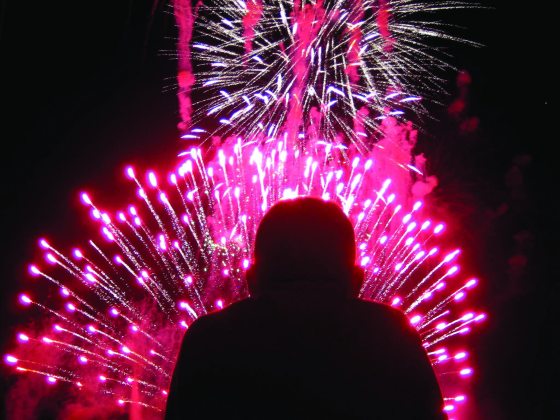
P.S. du Pont Fellow Colvin Randall takes in a Fireworks & Fountains Show in 2007. Photo by Alessandro Tombelli.
Once Randall has gotten through the forms and effects of the fountains, it’s onto the colors—a comprehensive process that he calls a “paint-by-numbers”, with each lighting sequence of the show taken from a library of color effects he’s amassed over the years. He paints his performances with colors that complement the music and the form of the fountains, second by second, hue by hue. “I’m a great fan of dance, especially ballet, and of music that’s danceable,” he shares. “I think of a fountain show as a water ballet, expressed by both the movement of water and by color.”
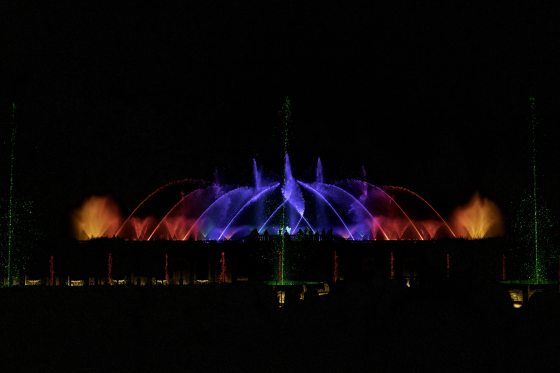
Romeo and Juliet, designed by Colvin Randall. Photo by Meghan Newberry.
With his layering of colors comes the upholding of a tradition. “I always end my shows with all white, which is based on the tradition that was here for the first fountain system during Mr. du Pont’s time. That ending is something I remember from my childhood while watching those fountain shows that captivated me, and I continue that tradition today.”
We’re thrilled to share the spectacular results of Randall’s designs with many of his Illuminated Fountain Performances running throughout this year’s Festival of Fountains. Sleeping Beauty, which runs June 8, is one of his favorites: “There’s one piece, called Diamond Fairy & Coda, and the music is very bright and that’s when I designed some of the colors to flash, which I rarely do, but it fits the music so perfectly. It’s very scintillating.” During Rachmaninov: Power and Passion, which runs July 27, “the slow movement is so incredibly beautiful musically, and the color changes are very luscious.”
Other performances designed by Randall include the graceful Swan Lake on May 18; the lively Italian Spectacular on June 1 and September 21; the timeless Romeo and Juliet on June 15 and August 3; and the new-this-year Evening Masquerade—set to the melodic works of Aram Khachaturian—on October 12 and as a Fireworks & Fountains Show on September 13. No matter the performance—or performances—you choose, you’ll find yourself just as captivated as we are by the magnificence that Randall so masterfully creates.
